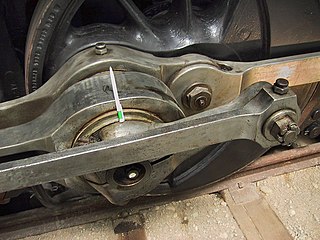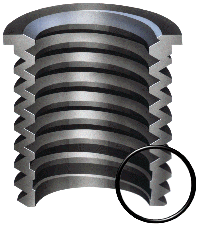 W
WA DSP coupling is a self-sealing symmetrical coupling which is secured by inter-connecting two couplings together.
 W
WA hose clamp is a device used to attach and seal a hose onto a fitting such as a barb or nipple.
 W
WA Jubilee Clip is a genericized brand name for worm drive hose clamp, a type of band clamp, consisting of circular metal band or strip combined with a worm gear fixed to one end. It is designed to hold a soft, pliable hose onto a rigid circular pipe, or sometimes a solid spigot, of smaller diameter.
 W
WA knuckle joint is a mechanical joint used to connect two rods which are under a tensile load, when there is a requirement of small amount of flexibility, or angular moment is necessary. There is always axial or linear line of action of load.
 W
WA knurled nut is a nut with a knurled outside surface. This facilitates tightening by hand or secures the nut into a handle or cover.
 W
WA mechanical joint is a section of a machine which is used to connect one or more mechanical part to another. Mechanical joints may be temporary or permanent, most types are designed to be disassembled. Most mechanical joints are designed to allow relative movement of these mechanical parts of the machine in one degree of freedom, and restrict movement in one or more others.
 W
WA rivet is a permanent mechanical fastener. Before being installed, a rivet consists of a smooth cylindrical shaft with a head on one end. The end opposite to the head is called the tail. On installation, the rivet is placed in a punched or drilled hole, and the tail is upset, or bucked, so that it expands to about 1.5 times the original shaft diameter, holding the rivet in place. In other words, the pounding or pulling creates a new "head" on the tail end by smashing the "tail" material flatter, resulting in a rivet that is roughly a dumbbell shape. To distinguish between the two ends of the rivet, the original head is called the factory head and the deformed end is called the shop head or buck-tail.
 W
WA split pin, also known in the United States as a cotter pin or cotter key, is a metal fastener with two tines that are bent during installation, similar to a staple or rivet. Typically made of thick wire with a half-circular cross section, split pins come in multiple sizes and types.
 W
WA spring pin is a mechanical fastener that secures the position of two or more parts of a machine relative to each other. Spring pins have a body diameter which is larger than the hole diameter, and a chamfer on either one or both ends to facilitate starting the pin into the hole. The spring action of the pin allows it to compress as it assumes the diameter of the hole. The force exerted by the pin against the hole wall retains it in the hole, therefore a spring pin is considered a self retaining fastener.
 W
WA threaded insert, also known as a threaded bushing, is a fastener element that is inserted into an object to add a threaded hole. They may be used to repair a stripped threaded hole, provide a durable threaded hole in a soft material, place a thread on a material too thin to accept it, mold or cast threads into a work piece thereby eliminating a machining operation, or simplify changeover from unified to metric threads or vice versa.